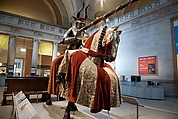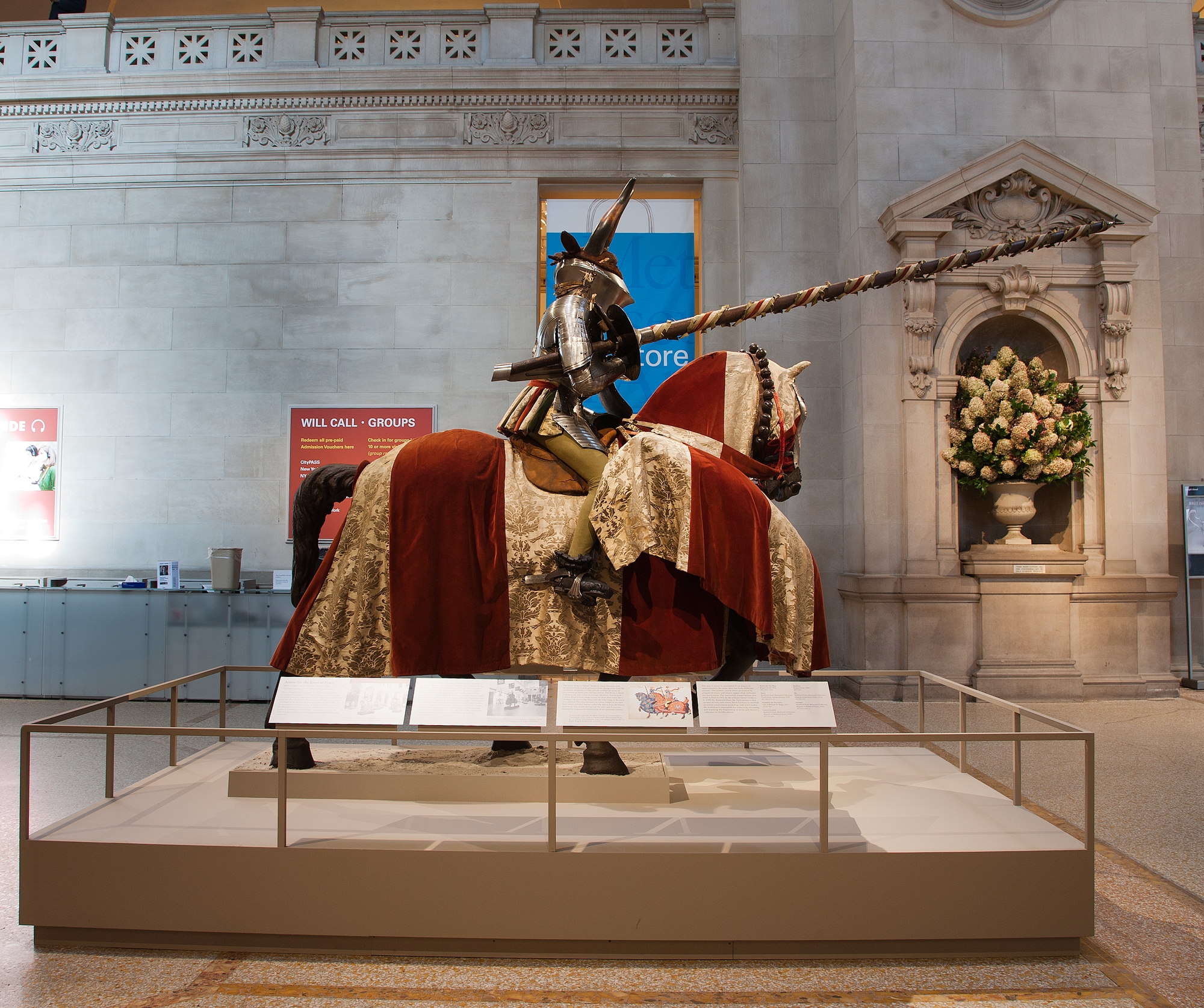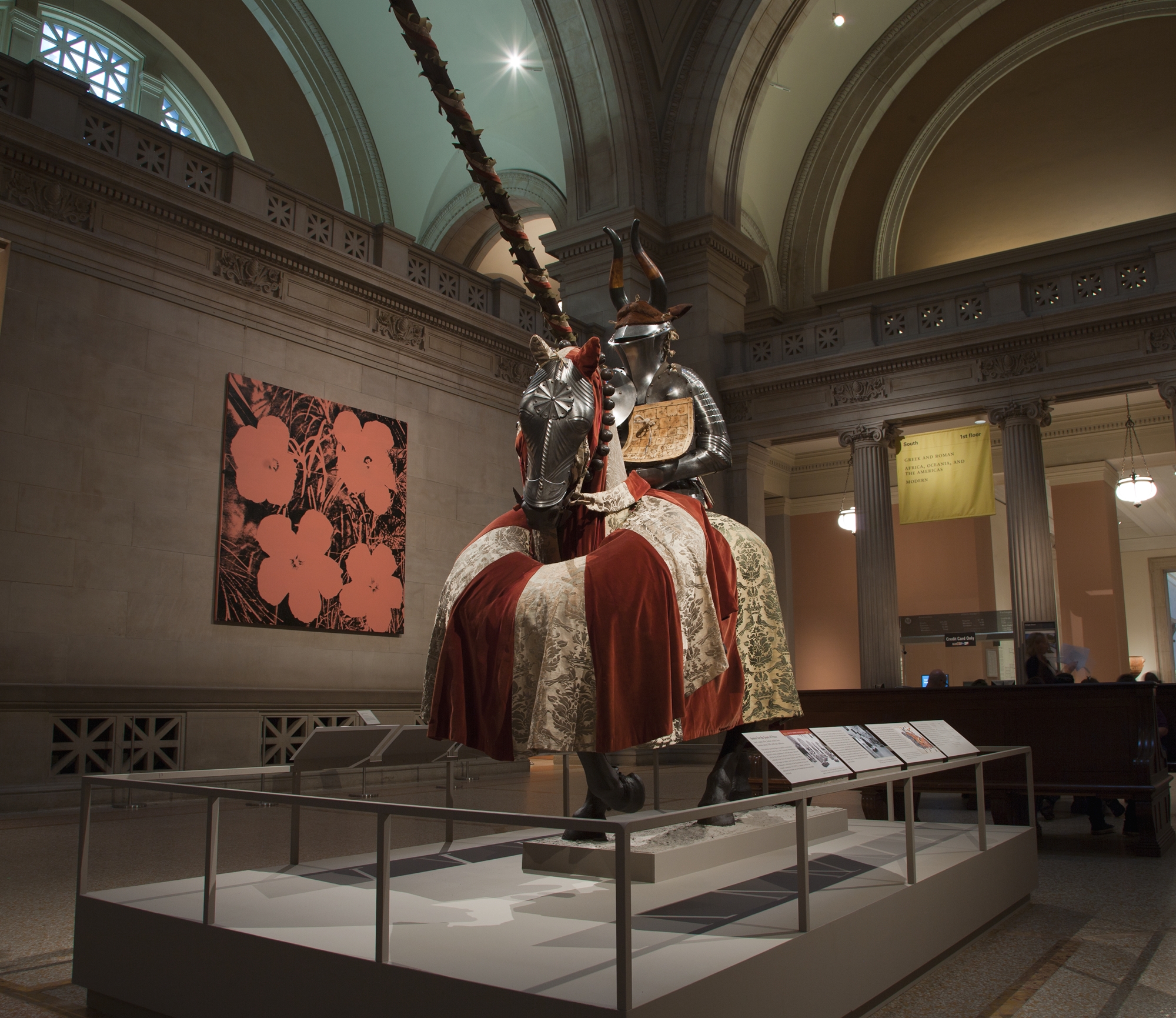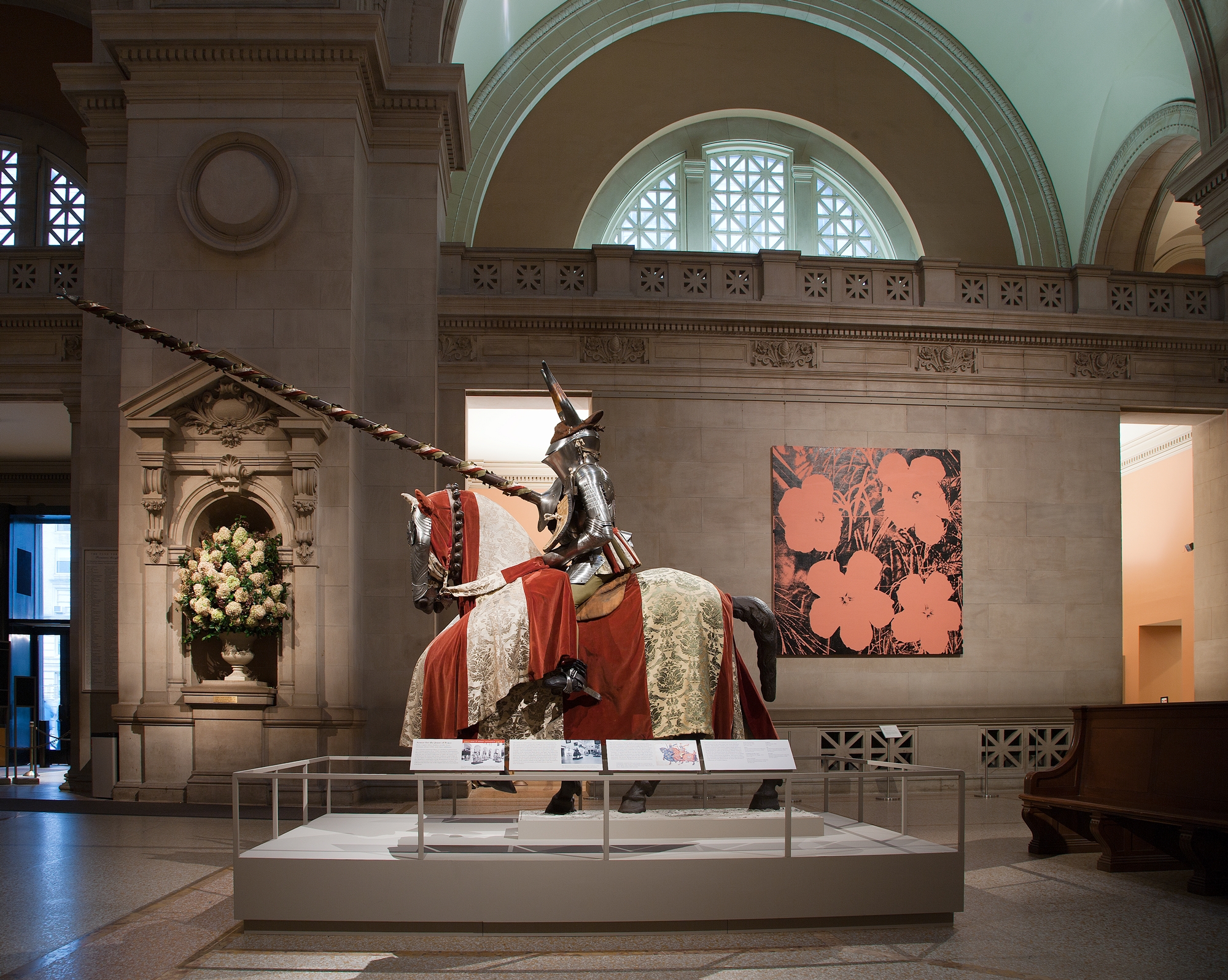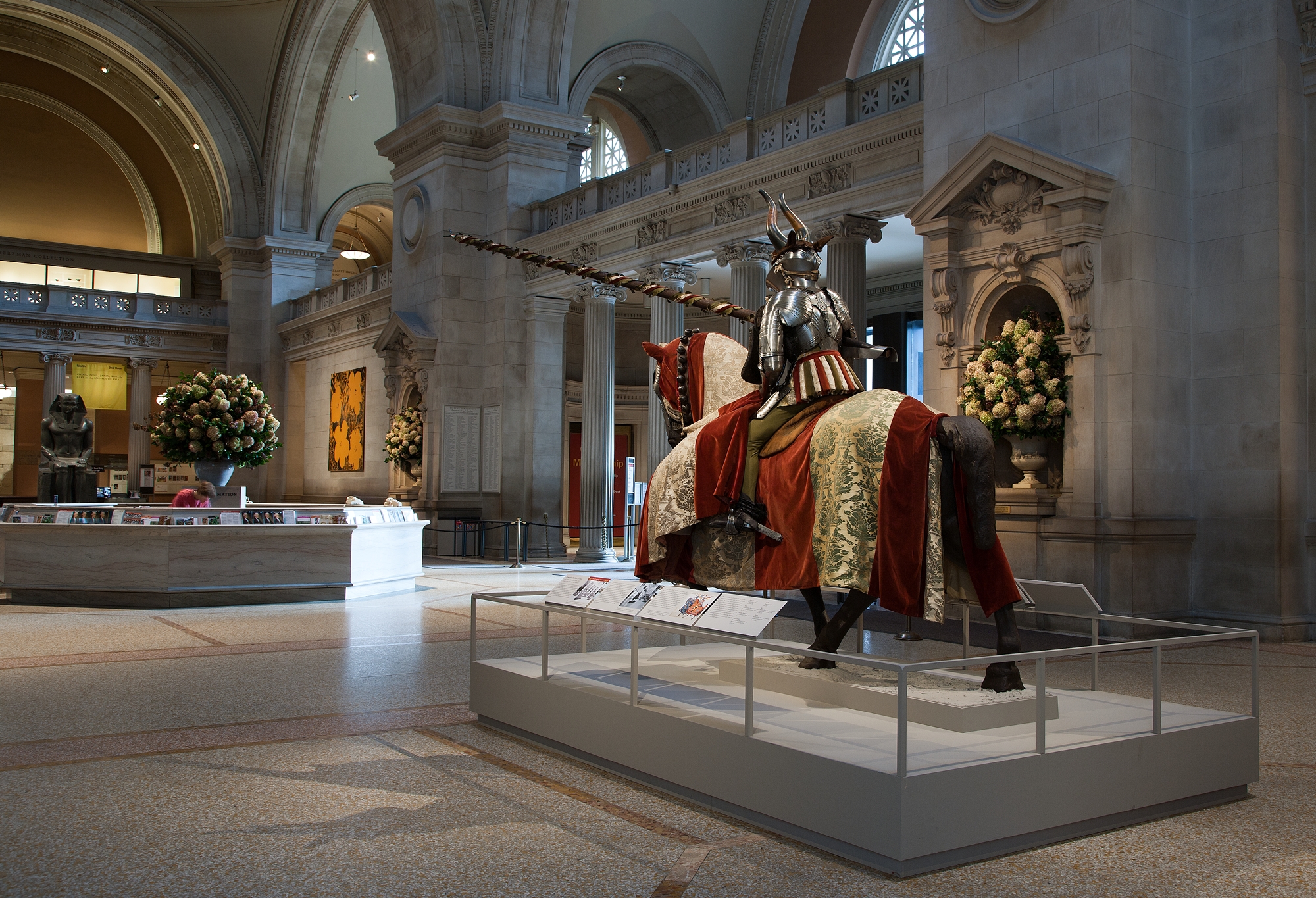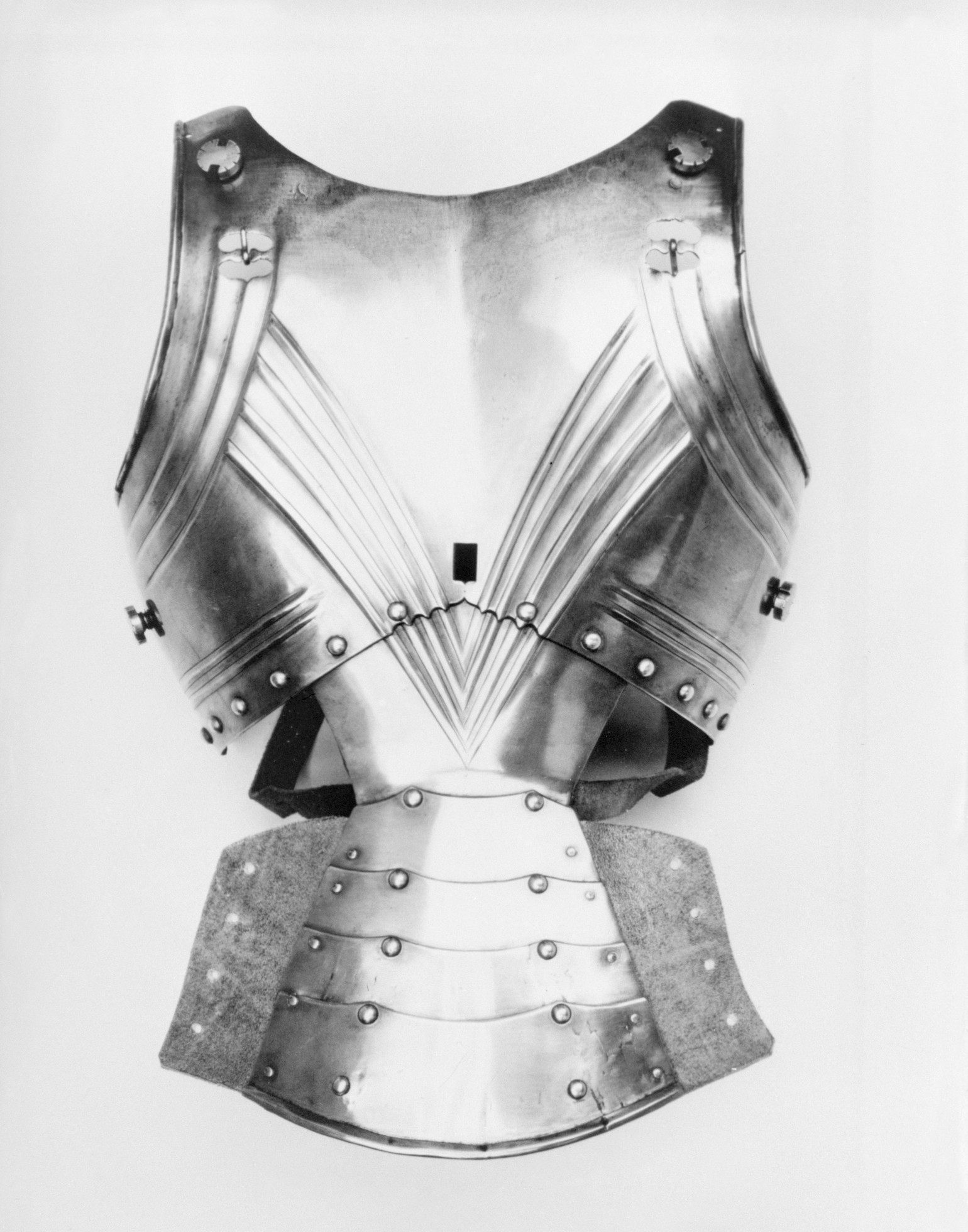Jousting Armor
Helmet made by Daniel Tachaux French
Not on view
This colorful equestrian figure is a faithful reconstruction of a German jouster of ca. 1500. Among the Metropolitan Museum’s earliest acquisitions of arms and armor, purchased with the Duc de Dino Collection in 1904, the armor was exhibited in the Arms and Armor Galleries until 1988. It is once again on display, now in the Great Hall, to herald the Museum’s celebration of the Department of Arms and Armor’s centennial (1912–2012), a century in which the collection has become one of the largest and most encyclopedic of its kind.
The armor is a special type worn in Germany and Austria for the "joust of peace" (Gestech), fought by two contestants on horseback armed with blunt lances. The aim was to unseat the opponent or at least to break a lance against his armor. An extreme sport, the joust was a test of the rider’s skill, courage, and horsemanship. Safety was of greater concern than mobility, so the armor was thick, heavy, and rigid. The helmet was bolted firmly to the breast- and backplate. Inside, the wearer’s head was encased in a padded hood and strapped firmly in place against the shock and whiplash of being struck with a lance. The lance was supported by a hook (lance-rest) and a long counter-hook (queue) bolted to the right side of the breastplate. Leg armor was not necessary, as blows below the belt were forbidden.
The horse wears a "blind" shaffron (head defense), with the eyes covered so as to prevent it from shying away from the encounter. Similarly, a collar of bells muffled the noise of the oncoming horse and roaring crowd. The horse is fitted with brocade and velvet trappings (modern) that include a straw-filled bolster hung across its chest that acted like a "bumper" to protect the horse and the rider’s legs in the event of a collision. This was necessary in a joust fought in an open field, which lacked a barrier (called the tilt) to keep the horses separated. The textile fittings for the man and horse are inspired by tournament illustrations of the sixteenth century.
The man’s armor is assembled from pieces of approximately the same date but from different sources. The helmet, shield (here covered with plaques of horn), and tassets (upper-thigh defenses) are restorations. The masterfully forged helmet was made in Paris in 1891 by the armorer Daniel Tachaux. In 1909 Dr. Bashford Dean, the Metropolitan’s first curator of arms and armor, hired Tachaux to establish an armor conservation workshop. Still active today, the workshop is responsible for conserving, mounting, and installing the Department of Arms and Armor’s collection of 14,000 objects.
Due to rights restrictions, this image cannot be enlarged, viewed at full screen, or downloaded.
This artwork is meant to be viewed from right to left. Scroll left to view more.
